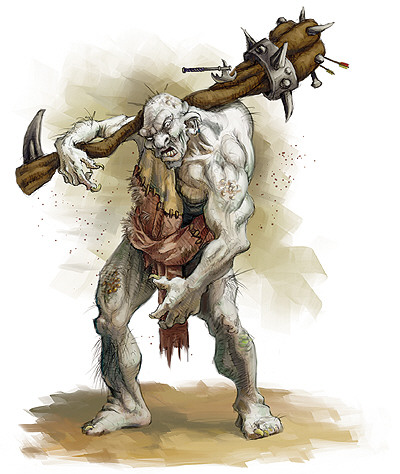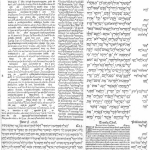I can’t put off the Thanksgiving hysteria any longer, so this morning I’m dragging myself and my resistant children to the grocery store. I probably won’t be back on to blog until after the holiday, but I didn’t want to leave you for all that time without something interesting to read, so I’ve decided to put up an essay I wrote for a creative nonfiction class a few years back.
A word of caution: this thing is long. About thirteen pages. So if you’re just clicking around this morning to see what’s new, you might want to come back later when you have some spare time and fresh cup of coffee. I hope you enjoy it, and I wish all of you a wonderful Thanksgiving, stress-free cooking, and lots of wine!
This Little Piggy
There is one part of the body that I find particularly compelling. In the case of my husband, I also find it particularly grotesque. This aspect of the human figure comes in a pair; they are not completely alike but very similar, both with strange groupings of coarse black hairs, both with and odor completely unique and utterly distinct, and both always sweating from nearly continual confinement. My husband is not so involved in himself that he is not aware of the particularly repulsive nature of them and rarely allows them to be seen except by me. He is sensitive to the fact that while some might not even think twice about it, some people might find a flagrant display of these twin appendages offensive; thus, he always errs on the side of caution when he is not well enough acquainted with guests to predict their reaction. However, when it comes to me, his dear wife, he not only notices my aversion to this aspect of himself, he revels in it. If I happen, through some weakness of spirit, to point out the odor of these parts and kindly request that he put them away, he takes great joy in rubbing my face with them; this, of course, only after we had one of our first great moments of tension with this problem at it’s center.
The first time I happened to catch a whiff of this particularly pungent smell I made much over it, holding my nose and laughing at my husband, taunting him for creating such a loathsome stench. He solemnly covered the offending parts and trudged into the bedroom. At this point I felt foolish and cruel for laughing at him; it was clear that this was a matter of grave sensitivity to him. I followed him into the bedroom, apologizing profusely. He forgave me instantly and simply informed me that his best friend at the age of twelve had a remarkably callous mother who would not allow the boy that would become my husband to enter her house until he had washed these appendages thoroughly, ensuring the eradication of their odor. I was ashamed of myself for dragging up such deep childhood wounds and for months steeled myself against making any remark that might remind him of such an unforgivable insensitivity. Yet as time passed so did the strength of my pity; my resolve weakened and one day I unfortunately begged him to wash.
I suppose that revealing this earlier trauma to me somehow cured him of his vulnerability on the matter, and he characteristically laughed and insisted that the scent was quite pleasant and much akin to roses, attempting, I must suppose, to persuade me of this by inching ever nearer to my nose. Now it has become a sort of standing joke between us.
This little piggy went to market…
Feet are strange organs. Biomechanically, they consist of twenty-six bones each, together composing one-quarter of the bones in the entire body. Each foot contains thirty-three joints, twenty muscles, and over one hundred ligaments. There are also countless nerve endings that make feet particularly sensitive.
Feet do a lot more than simply support the entire body. They are the major factor in maintaining balance, and due to the effects of gravity, each step a person walks or runs subjects the feet to a force two or three times greater than a person’s body weight. This extreme force is intensified remarkably when one wears high heels. A one hundred pound woman walking in high heels exerts one and a half times the pressure per square inch of a six thousand pound elephant walking in bare feet.
For over a millennium, from the late 9th until the early 20th century AD, women in China followed the practice of binding their feet. For a little girl, the process began between the ages of four and six so that their arches did not have much time to develop. The initial binding almost always took place in late fall or early winter, so the little girl’s feet would be numb and the pain would not be as severe.
The girl’s mother was responsible for binding her daughter’s feet. She would first soak the tiny feet in animal blood and herbs which caused dead skin to fall off. She would then cut her daughter’s toenails as short as possible in an effort to ensure that the toenails did not grow into the skin of the toes. She would massage the little girl’s feet, presumably to give her one last feeling of pleasure in her feet before a lifetime of pain, or possibly to relax the little girl’s muscles so the pain would not be as intense. After this, the mother would break each one of the four smaller toes on the girl’s little feet. She would then soak silk or cotton bandages ten feet long and two feet wide in the same liquid that the girl’s feet had been soaked in and wrap them around the girl’s broken toes, pulling them as tightly as possible against the heel. Every two days, the mother would remove the bindings and bind them again, each time a little more tightly. This process went on for at least twelve more years, ensuring that the little girl’s feet would remain between three and four inches long.
This little piggy stayed home…
Some people hate the sound of fingernails on a chalkboard; some people cringe at the sound of another chewing ice. Every time someone runs his or her bare feet against carpet, I shiver uncontrollably and my arms and legs instantly react by breaking out in goose bumps. The same goes for filing or having my toenails filed, except the sensation in this situation is like pain, without the actual pain.
When I was twelve years old, my mother began to insist that I file my toenails instead of just clipping them, so they would no longer be jagged and tattered, but would be smooth and evenly tapered. She also worried, with good reason, that I would develop ingrown toenails, and I remember now that her insistence came only after repeatedly bandaging toes whose too long nails had ripped off. But when I was twelve, it seemed arbitrary and cruel. I could never bring myself to do it, so I would sit in the big, overstuffed armchair in our living room while my mother filed away, closing my eyes tightly against the tiny tears that pooled in the outside corners of my eyes. Sometimes my knee would jerk involuntarily, and my mother would soothe me by saying, “Beauty is pain, Calah. Pain is beauty.”
“And I will put enmity between thee and the woman, and between thy seed and her seed; it shall bruise thy head, and thou shalt bruise his heel.”
-Genesis 3:15, King James Version
In the Borghese Gallery in Rome, Italy, there is a painting by the controversial baroque artist Michelangelo Merisi. To avoid confusion with a famous Renaissance artist of the same name, he became known as Caravaggio, the city of his birth. In this particular painting, one of his most controversial, he depicts the Virgin Mary holding a naked, toddler-aged Christ by the upper torso, under his arms. They are both bent over a snake that is writhing on the ground. Mary’s foot is on top of the serpent’s head and the child Christ’s foot is on top of Mary’s. Anne, the mother of Mary, stands by and watches.
The painting was commissioned by the Vatican to adorn an altar of the Papal Grooms. In 1605, Caravaggio briefly revealed the painting in the parish church of the Vatican where it was received with outrage. Cardinal Scipio Borghese promptly purchased it and added it to his private collection, now open to the public.
“To be a woman is to know,
Although we never heard of it at school —
that we must labour to be beautiful.”
W.B. Yeats, “Adam’s Curse”
I remember the mother of a boy I once dated staring critically at my toenails. The pink polish was chipped and peeling and a few toes were completely bare. She looked at me and said that women should have their toenails painted always. If a woman wants to be beautiful, all of her must be beautiful, down to the smallest details.
I glanced at her feet. They were soft, smooth, and perfectly manicured, curving gracefully in her stiletto heels. My faced burned with shame and I curled my toes under my feet, burying my offending nails into the hot rubber of my flip-flops.
As girls with bound feet in China grew older, they became unable to squat and rise from a seated position without assistance. This problem was intensified because indoor plumbing had not been installed; thus, taking care of a basic human need became impossible for a woman with bound feet to accomplish on her own. A study done in 1997 also revealed that these women had 5.1% lower hipbone density and 4.7% lower spinal bone density than women without bound feet. While these percentages may seem slight, the prevalence of hip and spine fractures and injuries in older people who do not suffer the debilitating effects of foot binding should hint that those women with bound feet are at a much greater risk for such injuries.
In addition, little girls with bound feet had severe trouble walking for the first few years after the ritual was performed. While she eventually learned to compensate for this, a girl with bound feet would, for the rest of her life, be unable to dance.
This little piggy had roast beef…
Last night, I strapped myself into a pair of five-inch heels and went to my little brother’s graduation dinner. I was in those heels, walking around with my daughter Sienna in my arms, for five hours.
Today I can barely go up the stairs. My legs ache, my feet are cramping, my knees are buckling, and my heel is adorned with three excruciating blisters.
The story of Cinderella originated in China in the 9th century AD. In this version, a young Chinese girl named Yeh-hsien has lost both her father and mother and is hated and abused by her stepmother and stepsister. They force Yeh-hsien to cut wood from dangerous forests and draw water from bottomless pools each day; on one such day, Yeh-hsien befriends a ten-foot long fish with red fins and golden eyes. However, the stepmother finds out about this friendship and serves the fish for dinner after burying its bones. Yeh-hsien prays over the bones of the fish and, through a little bit of magic, one of her golden slippers ends up in the hands of King T’o-han, who seeks out the one whose bound feet will fit in the shoe. Yeh-hsien hides, thinking that the king means to find and kill her while he is visiting their house. At her mother’s command, Yeh-hsien’s stepsister, whose feet are not bound, cuts off her toes so they will fit in the tiny slipper. Even so, they do not. King T’o-han eventually finds Yeh-hsien, whose bound feet fit perfectly inside the golden slipper, and marries her.
“…and Peter saith unto him, Lord, dost thou wash my feet? Jesus answered and said unto him, What I do thou knowest not now; but thou shalt know hereafter. Peter saith unto him, Thou shalt never wash my feet. Jesus answered him, If I wash thee not, thou hast no part with me.”
-John 13: 6-8
Before my husband and I started dating, when I was still in that intoxicated stage of obsession, he once picked one of my feet up and laid it across his thigh. We were sitting outside a coffee bar in early spring. He stared at my feet for at least three minutes, tracing the bones of my toes lightly with his fingers.
Those three minutes felt like three hours to me. I was in an agony of despair, hoping, praying, begging that he would not notice how rough and jagged my heels were. Like sandpaper. Or how blackened the bottom of my feet were from baking in black rubber flip-flops in the Texas heat. Or how the toenail polish on the middle toe of my left foot was slightly chipped at the top right corner and if he looked closely enough, he would have seen in that chipped section that underneath my red polish my toenail had turned yellow. I remember begging, bargaining with God; please, please, do not let him judge me because of my feet!
He finally looked up at me and said, “You have really long toes for such small feet.”
That was it.
That was all he said, and that was the last time we talked about my feet until we got married. A few weeks ago, I asked him about that night. He doesn’t even remember it.
This little piggy had none…
Because the bound feet of Chinese women were constantly deprived of oxygen and were not allowed to grow naturally they quickly died, usually by the time the girl reached the age of ten. As with any dead appendage, the foot developed the characteristic smell of dead flesh, which enveloped the girls wherever they went.
Many men found this smell to be intoxicating.
“I will put enmity between you and the woman, and between your seed and her seed; she shall bruise your head, and you shall bruise her heel.”
-Genesis 3:15, New American Bible
The Caravaggio painting of the Virgin with the Serpent was offensive primarily because it showed the woman and not the Christ child crushing the head of the serpent. However, there is a controversy among biblical scholars as to exactly which pronoun the original Hebrew text used to indicate the one who would crush the serpent’s head. The problem is that the original Hebrew of the text used only the letter H to signify he, she, or it. Because the Hebrews did not write with vowels for some time, the key ingredient to figuring out the particular gender of the one who would crush the serpent is missing.
However, as several Catholic theologians have argued, the purpose of the verse is to imply a joint sacrifice on the part of the Virgin, in giving her son to death, and Christ, in giving himself to death. The deed could not have been accomplished by only one of the two; although Christ was God, and giving himself to death was mankind’s salvation, the Virgin Mary also gave up her son; both were active participants in the sacrifice.
If I lived in China a little over a hundred years ago, one cold winter day I would wake up and take Sienna outside to make snow angels. We would play and laugh and throw snow at each other, and then come inside. I would fix her some warm rice cereal and soak her little feet in a mixture of herbs and blood. Smiling up at her, I would take her feet from the bowl and let the liquid drip from them as I clipped her toenails. I would massage her feet, deeply pressing into all of the twenty muscles in each, and tell her a fairy tale to make her laugh. While she was laughing, delighted with a story of dragons and emperors, I would quickly break her smallest toe. I would not look up into her eyes, which would have turned so quickly from joy to pain, trust to agonizing fear, nor at her mouth, which would have gone from a wide, gleeful smile to a hollow O, releasing bitter screams. I would talk softly and constantly, explaining to her the need for this to be done, keeping my voice steady and low, calm, ordering my face to remain in a serene mask over the anguish that burned somewhere deep in my chest, persuading my daughter of what I knew not to be true – that the pain would cease – as I broke the remaining seven toes. On the last pinky toe I would have a difficult time because her tiny body would be heaving in sobs and her last three functioning toes would instinctively be curled under; the last pinky toe would be so small and still slippery from the animal blood and rigidly curled in defense. But finally I would grasp it and give it one quick jerk. Then I would take the silk cloths out of the blood and herbs and wrap them swiftly and securely around my daughter’s shaking feet, pulling them ever tighter. Years of practice would have taught me to be quick about it, and not prolong the worst of the agony.
For the next few months I would sleep lightly, waking once or twice each night to rush to my daughter’s side and quiet her sobs. It is necessary, I would whisper, so as not to wake her father and brothers. This is a part of being woman, of being beautiful. Beauty is pain, pain is beauty.
This little piggy went…
My husband’s feet sweat constantly from being continually confined in black dress socks and shiny black shoes, which he wears to a job that he never expected to have. He used to wear sandals every day, but when he had to get an office job in order to support our little family he switched to uncomfortable imitation leather.
His smelly, hairy, rough feet have carried us through the worst and the best times in our life. They carried me down the stairs of my apartment once when I was too sick to walk and pressed down too hard on the gas pedal all the way to the hospital. His feet carried him to and from my apartment at all hours of the night and day when I wouldn’t see anyone and refused to come out of my bed, because although I had given up he never did. His feet touched mine, toe to toe, as he promised to love me always. His feet stood strong beneath him when he lifted our unborn child and me up for a kiss. His feet carried him back and forth from the waiting room to the delivery room, counting out the hours in worry. His feet walked the carpets many nights, soothing a tiny baby with their motion. And every night, his feet swing up and over mine, smell and all, as he tells me goodnight.
There are two different legends about the origins of foot binding in Chinese culture. The most common legend is about the Chinese prince Li Yu in the Sung dynasty (AD 960-1280). The prince’s concubine, Yao Niang, danced on a platform shaped like a lotus, and also toe-danced inside a six-foot high golden lotus flower. Many Chinese women wanted to emulate this artistic dancing style, and the dance looked best with bound feet. In addition, Yao Niang also looked so graceful walking with her feet bound that the royal court compared her to a woman “skimming over the top of golden lilies.” Thus, the lily-footed woman with bound feet became the model for all Chinese women. The other legend tells of the last Empress of the Shang dynasty, who had a clubbed foot but did not want this deformity to be known. To hide it, she asked her husband to make binding feet mandatory for all girls, so that her own bound feet would be considered beautiful.
… “Whee, wheee, wheee!” all the way …
As I finish reciting “This Little Piggy” for the seventeenth time in the last ten minutes, Sienna’s back arches, a dimple appears in her left cheek, and halting giggles erupt from her smiling lips. She curls her toes under and kicks her feet in the bathwater, laughing and twisting her spine in excitement. I take a short break from playing with the little piggies in order to wash the little piggies. I swirl a Q-tip around in the soapy water, gently cleaning the tiny space between each of her toes. Sienna watches me expectantly, a smile hiding just behind her lips, waiting for her cue to laugh and wiggle.
I can’t resist. “This little piggy went to market, this little piggy stayed home…” Sienna’s giggles mix with my own as I repeat the game again.
On the night of Holy Thursday during the week before Easter, my husband, my daughter and I went to his parents’ house for an Alexander family tradition. My father in-law began by reading John 13:1-15 to us, then his wife brought out a bowl filled with clean water and a towel. Having spent a lifetime bathing her own children, she took care to fill the bowl with warm water. The family took turns washing each other’s feet as I watched, a lump slowly forming in my throat. I was the last to take part in the ritual. As I placed my husband’s feet in the bowl, now filled with cloudy, brownish water and three bubbles, one tear ran down my cheek. I realized that I would never tell my daughter to file her toenails without explaining the need for such a thing. I would never beg my husband to get a pedicure so his feet weren’t so disgusting. I would never repeat the phrase “Pain is beauty, beauty is pain” to my daughter without explaining the pain of true beauty. What I would do, though, is pray constantly for the patience and strength to wash both of their feet a little bit every day.










